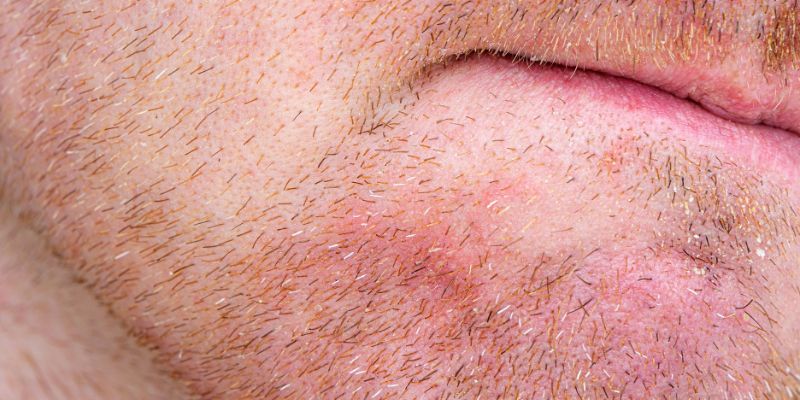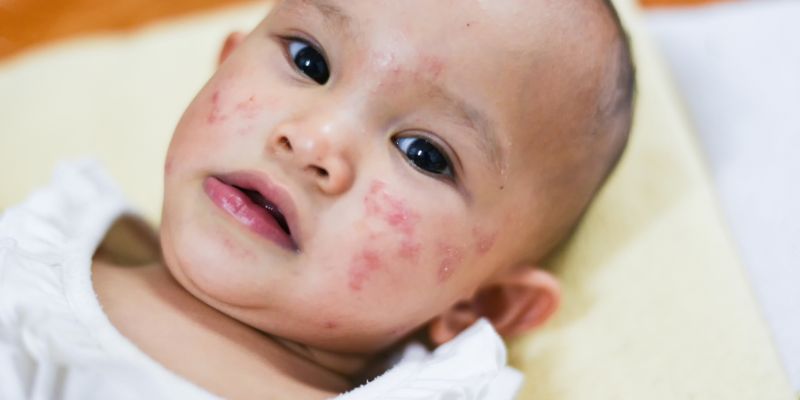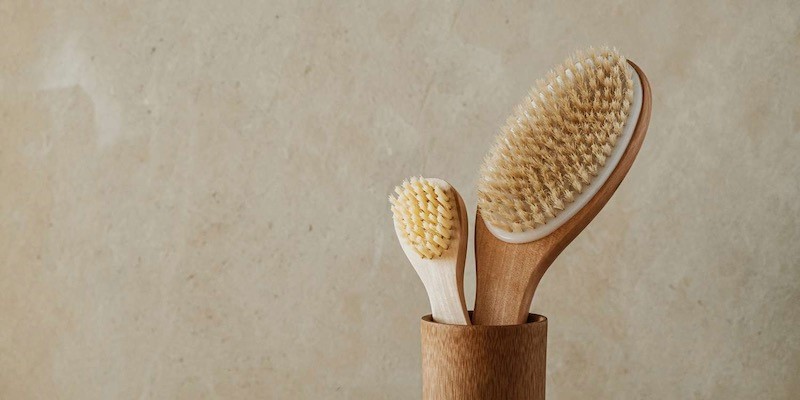How to Treat Seborrheic Dermatitis on Your Face: An Overview
Nov 16, 2023 By Madison Evans
Seborrheic dermatitis is a self-conscious, unpleasant facial skin problem. This chronic illness demands careful and ongoing treatment due to its redness, flakiness, and itching. The key to good therapy is knowing that it stems from elements such as immunological responses, genetics, and the existence of Malassezia yeast.
This article will walk you through some doable actions to reduce symptoms and stop flare-ups. A comprehensive approach may empower people to pursue better skin, from mild cleaning regimens and over-the-counter antifungal remedies to prescription medicines and preventive measures.

What Is Seborrheic Dermatitis?
People with seborrheic dermatitis have red, swollen spots on their skin that often flake or scale. This problem usually happens in places with many oil glands, like the face and head. A mix of genetic, environmental, and immune system factors causes it.
Its fungal roots are clear from the fact that the yeast Malassezia furfur was so important to its growth. The main signs of the condition are itching, redness, and sticky, brown scales that can affect both your physical comfort and your sense of self-worth. The exact reason is unknown, but worry, cold weather, and some neurological conditions may worsen symptoms.
Although no one knows what causes it, things like worry, cold weather, and some nerve conditions may worsen symptoms. With ongoing care, seborrheic dermatitis is not infectious. Knowledge of what it is is necessary to come up with successful solutions and changes to your lifestyle that will lessen its effects on your daily life.

Common Symptoms of Seborrheic Dermatitis
Seborrheic dermatitis presents with a unique mix of symptoms that work together to provide an identifiable appearance. Redness, where the afflicted areas frequently seem inflamed and irritated, is one of its distinguishing symptoms. Flakiness or scaling, which results in the appearance of visible skin flakes or dandruff, is another common symptom.
Itching is a bothersome feature that never goes away and can range from minor to severe. The impacted regions, usually abundant in sebaceous glands, would appear greasy, worsening the pain. This combination of redness, flakiness, itching, and oiliness may affect an individual's physical health and self-esteem.
The face is the main area affected; however, it can also spread to the chest and scalp. A person's ability to treat seborrheic dermatitis proactively and enhance their general quality of life depends on their ability to identify and comprehend these typical signs.
Medical Treatment
Most of the time, topical treatments are suggested for seborrheic dermatitis flare-ups.
- Corticosteroids: Strong soreness can be eased with shampoos and creams that contain corticosteroids or hydrocortisone. Because they can cause side effects, these should only be used briefly.
- Light Therapy: Putting ultraviolet light on the skin may help calm it down and make it less red and itchy.
- Keratolytics: Scales can be removed with products that have salicylic acid, lactic acid, urea, or propylene glycol in them. Gels or creams that kill germs or fungi. If you have a fungus or bacterial illness, these can help.
- Medicated Shampoos: Two times a week for at least a month, use a product that has salicylic acid, selenium sulfide, zinc pyrithione, coal tar, and ketoconazole in it. You can use them forever if you need to. Combining these methods with an alternative or natural one may improve the side effects.
- Coal Tar: Making skin cells die and fall off more slowly can help coal tar cream. Put it on flaking areas, wait a few hours, and then shampoo to remove it.
Natural Supplements
Aloe Vera
Medicinal plant aloe vera can help reduce swelling and pain. Its product has been shown to help treat seborrheic eczema in studies. You can help stop flare-ups by taking aloe vera gel or oil supplements. For those who do have flare-ups, they can also help make them less horrible.
Tea Tree Oil
Investigators have examined how tea tree oil can help with several skin problems. This substance treats seborrheic dermatitis by killing bacteria, fungi, and inflammation. If they have tea tree oil in them, shampoo, conditioner, and other washable items may help stop burning.
Fish Oil
If you have eczema that worsens because of allergies, fish oil pills can help calm them down and give you other health benefits. You can improve your defense system and heart health with its omega-3 fatty acids.
Probiotics
Eczema sufferers, especially children, may benefit from probiotics. There isn't much research on probiotics and seborrheic dermatitis. No matter what, probiotics can help your gut system stay healthy. All over your body, this can help reduce inflammation.
Seborrheic Dermatitis And Psoriasis
Similar symptoms can be present in both seborrheic dermatitis and psoriasis. There are red skin areas with flakes on both. It's on your back and scalp, respectively. Two to four percent of people have psoriasis, an inflammatory skin condition. Comparatively speaking, seborrheic dermatitis tends to have thinner scales than psoriasis.
Such scales have incredibly distinct edges. Instead of white or yellow, psoriasis scales on the scalp resemble silver: seborrheic dermatitis and psoriasis overlap in a disorder known as sebopsoriasis. Then, you exhibit both symptoms: itchy, scalp- or back-related white and silver flakes. Talk to your healthcare professional if you're unsure if you have seborrheic dermatitis or psoriasis. One's therapy could not be the same as another's.
How Can I Reduce The Risk Of Seborrheic Dermatitis?
Preventing seborrheic dermatitis is not very possible. The condition known as cradle cap is normal and safe. It is easily treated at home. Suppose you have excessive androgens, lipids, or skin yeast overgrowth. You may be more prone to seborrheic dermatitis as an adult or teen.
Sleeping adequately, reducing stress, and getting a few minutes of sun each day are simple, healthy strategies to minimize your risk. When using medicated shampoos and skin care products, always heed the advice of your healthcare practitioner. Recurrences of your ailment and additional visits to your healthcare practitioner may arise from inadequate or improper therapy.
Conclusion:
Ways to treat seborrheic dermatitis require understanding its causes and symptoms. Corticosteroids, light therapy, aloe vera, tea tree oil, fish oil, and probiotics can aid. But telling seborrheic dermatitis apart from diseases like identical psoriasis is important for providing the right treatment.
Even though it may not be possible to completely avoid getting it, living a healthy life with enough sleep, managing stress, and moderate sun contact can lower the risks. Sticking to the treatments, your doctor prescribes and following their advice are still very important for managing seborrheic dermatitis effectively over the long run.
-
 Oct 18, 2023
Oct 18, 2023Know About Teething Symptoms and How to Help Your Baby Get Relief
Chilled fruits, cuddles, a cool metallic spoon, a warm bath, teething toys, gum massage, and a cool washcloth are effective ways to relieve the baby during teething
-
 Nov 02, 2023
Nov 02, 2023Unlocking the Benefits of Dry Brushing: A Comprehensive Guide
Discover the art of dry brushing for radiant skin and improved well-being. Learn the right technique and reap its countless benefits.
-
 May 30, 2023
May 30, 2023Reasons Why You're Always Hungry
Is excessive hunger getting in the way of living your best life? If there's a reason behind it, learn how to get relief.
-
 Oct 18, 2023
Oct 18, 2023People With Total Colour Blindness Able To See Red After Gene Therapy: An Overview
The groundbreaking development in gene therapy has enabled those with total color blindness to see red for the first time. Hopefully, it will help them to see other colors also
